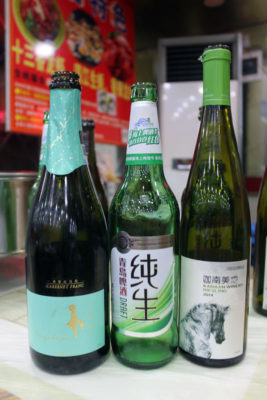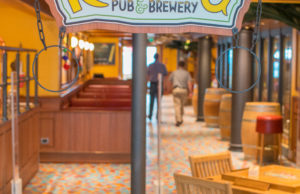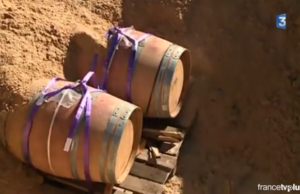Chinese Wine: The Grape Leap Forward

Don’t tell it to French winemakers, but in 2015, the Chinese wine industry hit a major milestone by narrowly surpassing France in land dedicated to vineyards. With 7,990 square kilometers of grape-growing land concentrated mostly in China’s north-central and northwestern regions, the country now ranks second only to Spain and holds almost 11 percent of the world’s vineyards by land area.
Most experts estimate that the vast majority of these vineyards grow grapes for the table, not wine, but the statistic follows the trend of wine’s growing popularity in the Middle Kingdom. And China is now among the top 10 wine-producing countries in the world.
Quantity does not equal quality though in China, and before you start buying Great Wall wine at your local Family Mart, keep in mind that just a decade ago it was not uncommon for wine to be “cut” with Coca-Cola or Sprite at banquets to make it palatable. More than half of wine sold in China still retails for $5 or less, but that’s changing with the oeno-education of the growing middle class. If you ignore the plonk and the bulk of the products from the “Big Three” wine producers (Changyu, Dynasty and Great Wall make up 60 percent of the market) and search for passionate boutique wineries, you’ll be pleasantly surprised at the “New Latitude” wines coming out of China.
The history of wine in China is suprisingly long and impressive. A 4,600-year-old archaeological site at Rizhao in Shandong uncovered 200 ceramic pots that still held alcohol – including seven that were used for grape wine. During the Han Dynasty, grape seeds entered modern-day Xi’an, the terminal stop on the Silk Road, from Uzbekistan. It was noted at the time that the wine made from these grapes was sweeter – and easier to recover from – than wine from grains. During the Tang Dynasty, Chinese influence spread to Xinjiang, and the discovery of the “mare’s teat” grape, so-named for its elongated shape, led to a revival of wine in this sumptuous era.
China’s modern wine industry made its first real international splash in 2011, when four domestic reds were pitted against French Bordeaux in a blind taste test judged by an international panel in Beijing. Led by Grace Vineyard’s Chairman’s Reserve (one of the most-awarded domestic brands with vineyards in Shanxi and Ningxia), China won the competition. There was plenty of French grumbling about the outcome. Accusations of rigging were made, as the wines all had to retail for $100 or less, and that included the 48 percent tax China levies on the imported wines, but it still put Chinese winemakers squarely on the map. The same year, Helan Mountain (Ningxia) took home the first international trophy for China at the Decanter World Awards. In 2016, Chinese sommeliers upset their Old World counterparts by taking home the gold in a blind taste test at Château du Galoupet.
Today, there are more than 400 wineries scattered around China, from the New Latitude wines being made in Yunnan, a southeastern province bordering on Myanmar, Laos and Vietnam, to Bordeaux-style wines made in Shanxi, at approximately the same latitude as the famous French region. Ningxia is home to more than 100 wineries, earning it the generous nickname the “Napa of China.” The region started growing wine grapes in the 1990s and credits the dry climate for the quality of grapes, but it’s also famously cold, and the vines have to be buried in winter to keep them alive.
Big international names are getting involved too. Moët Hennessey has opened a vineyard (Ao Yun) on the Tibetan plateau in Yunnan, and Château Lafite Rothschild established a wine estate in Shandong province.
There’s still plenty of room for China’s thirst for wine to grow; locals consumed 1.5 liters per capita in 2013, way below the 51.9-liter average in France. But with the country’s massive population, that still means high numbers – fifth in the world as a matter of fact. And in 2013, China (including Hong Kong) surpassed France and Italy as the world’s largest consumer of red wine, as the color is considered lucky in China and makes up the bulk of wine consumption there. Chinese demand for red wines has driven up prices of Bordeaux and Burgundy at wine auctions, much to the chagrin of European and American wine collectors.
If you’re looking to sample some of China’s best boutique wines, several high-end restaurants and hotels around Shanghai now serve them (you can also sample some on a tour run by CB’s local partner). M on the Bund carries the most, with four options – Grace Vineyards, Helan Mountain, Kanaan (Ningxia) and Nine Peaks (Shandong) – while Napa Wine Bar & Kitchen sells Grace and Silver Heights (Ningxia).
The most widely distributed domestic wine in town is Kanaan, a Ningxia-based winery that snapped up the most awards in 2015. You can find bottles at Element Fresh, Lost Heaven, Chez Maurice and Egg (at chef’s tastings), as well as by the glass at Hakkasan. In addition, Peace Hotel, Shangri-La (both Jing’an and Pudong locations), Ritz Carlton Pudong and all Sofitel properties also carry Kanaan in their bars and eateries. Grace Vineyards sells direct to consumers on their Tmall store.
Click here to view original web page at culinarybackstreets.com





















